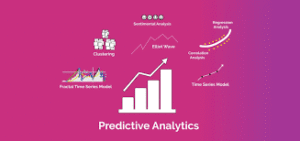
Predicting the Future with Data – Too Accurate to Ignore
What if you could know which customers will leave, which patients will fall ill, or even which crimes might happen before they occur?
It’s not magic. It’s data.
Welcome to the age of predictive analytics—a powerful blend of statistics, machine learning, and big data that’s giving businesses, governments, and scientists the ability to see the future with stunning accuracy.
It might sound like science fiction, but predictive models are already shaping your daily life—often without you knowing.
Also check for : neurotech-the-mind-reading-devices-are-coming
📊 What Is Predictive Analytics?
Predictive analytics is the use of historical data, machine learning, and algorithms to forecast future outcomes. By analyzing patterns in massive datasets, systems can “learn” from the past to make probable predictions about what comes next.
It’s not guessing. It’s statistical insight at a superhuman scale.
🔮 Where Is It Being Used?
Predictive analytics is quietly embedded in industries all around you. Here’s how:
🛍 Retail
-
Amazon knows what you want before you do. It predicts your next purchase based on past shopping habits.
-
Dynamic pricing adjusts costs in real time depending on demand and behavior.
💳 Banking
-
Fraud detection systems flag suspicious transactions in milliseconds.
-
Credit card companies use predictive scores to assess loan risk before approval.
🏥 Healthcare
-
Hospitals predict which patients are at risk of readmission.
-
AI models spot early signs of diseases like sepsis or cancer—before symptoms show.
🚓 Law Enforcement
-
Some cities use predictive policing to anticipate where crimes are likely to occur based on crime data and patterns.
🎬 Entertainment
-
Netflix’s recommendation engine is a data crystal ball, predicting what you’ll binge next.
🧠 How Does It Work?
-
Data Collection – Millions of data points (like behavior, location, purchase history).
-
Modeling – Algorithms find patterns and build relationships between variables.
-
Prediction – The model forecasts a likely outcome based on input data.
-
Action – The system takes automated steps (flagging, alerting, recommending).
The more data the system consumes, the smarter—and more accurate—it becomes.
🚀 Real-World Examples That Feel Like Sci-Fi
-
UPS saves millions by predicting the fastest delivery routes based on weather, traffic, and historical delays.
-
Airlines predict maintenance failures before they happen, preventing flight delays.
-
Social media algorithms forecast engagement, serving you content you’re most likely to click.
Even governments use predictive models to allocate resources before natural disasters strike.
⚠️ Should We Be Concerned?
Yes—and no.
✅ The Good:
-
Saves time, money, and lives
-
Improves efficiency across sectors
-
Enables early intervention (especially in health and safety)
❌ The Risk:
-
Privacy erosion – Your personal data fuels the machine.
-
Bias in algorithms – If historical data is biased, predictions can be too.
-
Overreliance – Decisions may be based on models, not human judgment.
“Predictive analytics isn’t just about what will happen—it’s about what should happen. And that’s where ethics come in.”
👁️🗨️ Is It Really THAT Accurate?
In many cases—yes. Some models can predict outcomes with 85–95% accuracy, depending on the data and context.
But these tools aren’t psychic. They deal in probabilities, not guarantees. The predictions are only as good as the data—and the humans interpreting it.
🧬 The Future of Forecasting
As computing power grows and datasets explode, predictive analytics will become:
-
More personalized – Health care tailored to your genetic risks
-
More real-time – Live prediction of weather, financial shifts, even disease spread
-
More embedded – In homes, cars, wearables, and workplaces
Eventually, predictive models won’t just forecast the future—they’ll shape it by triggering actions automatically.
🧭 Final Thought
Predicting the future is no longer a fantasy reserved for fortune tellers. In a data-driven world, tomorrow’s possibilities are increasingly visible today.
The question isn’t “Can we predict what’s next?”
It’s: “What should we do with that knowledge—and who gets to decide?”
Because in a world run by algorithms, understanding data isn’t just power—it’s destiny.